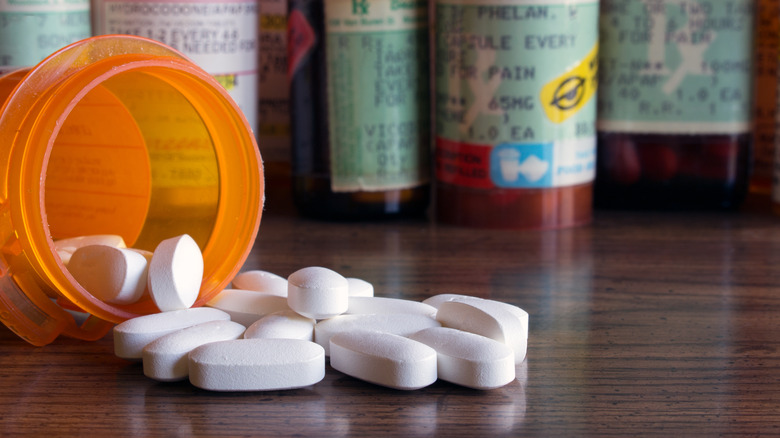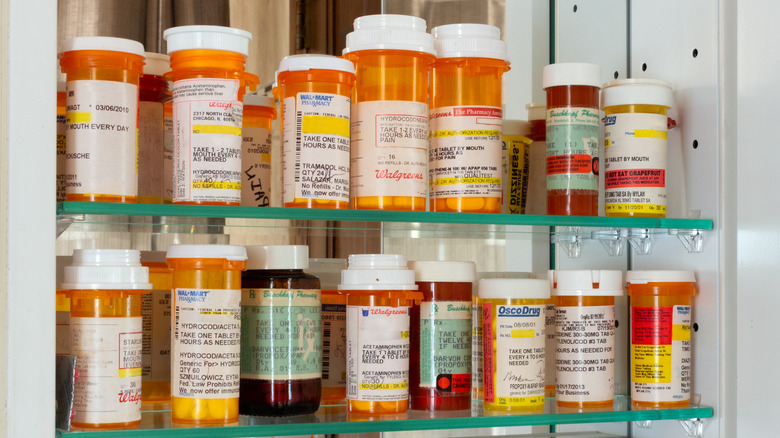The Real Reason Prescription Pill Bottles Are Orange
There is something oddly beautiful about old product packaging. They are so intriguing that the Society for Historical Archeology has an entire page dedicated to the various forms they have taken throughout the years. From ceramic pots to plain glass bottles, each style had its own purpose and special reasons behind its design. They are so visually captivating that every Halloween, craft stores sell recreations and adaptations as decorations. There are even tutorials on ways to make modern prescription bottles look more like their ancestors for those who want to make their own decorations.
However, there is a reason that modern prescription bottles don't much resemble their early cousins. As beautiful as antique bottles may be, they weren't always well designed for their job. Namely, they weren't always the best option to safely house medicine. Modern medication bottles have been designed with safety in mind, both for the people taking the medicine and for other people in their homes. This is the reason Canadian doctor Henri Breault developed safety caps, after all (via The Drive Magazine). In fact, the modern design is so specific that even its color was specially chosen for the job at hand.
Protective packaging can block UV light
It might be hard to believe, but there is a very specific reason why modern prescription bottles are orange. It's the same reason that some prescription bottles are opaque. As Rx Saver explains, these design choices were made to protect the medication in the bottles from ultraviolet light. This naturally occurring form of radiation, found in sunlight, can degrade medication.
This degradation can render the medication less effective because the UV light can alter or damage chemical compounds. These alterations can also cause the medication to have different effects on the body or result in unexpected side effects. Some medications are more light-sensitive (or photosensitive) than others, but the orange bottles help prevent degradation, regardless of the medication type. It's an important enough issue that a study highlighting the need for rapid response UV degradation testing was published in Chemistry & Chemical Technology in 2011.
Another study published in the Journal of Pharmaceutical Health Care and Sciences in 2018 suggested that LED light may also degrade medications. The study authors found that brown plastic bags helped avoid any color change or signs of degradation in tested medications, but research into the effects of LED light is still ongoing. In the meantime, the trusty orange bottle will keep our medications safe from UV light so we know we're getting what we expect from our prescriptions.


